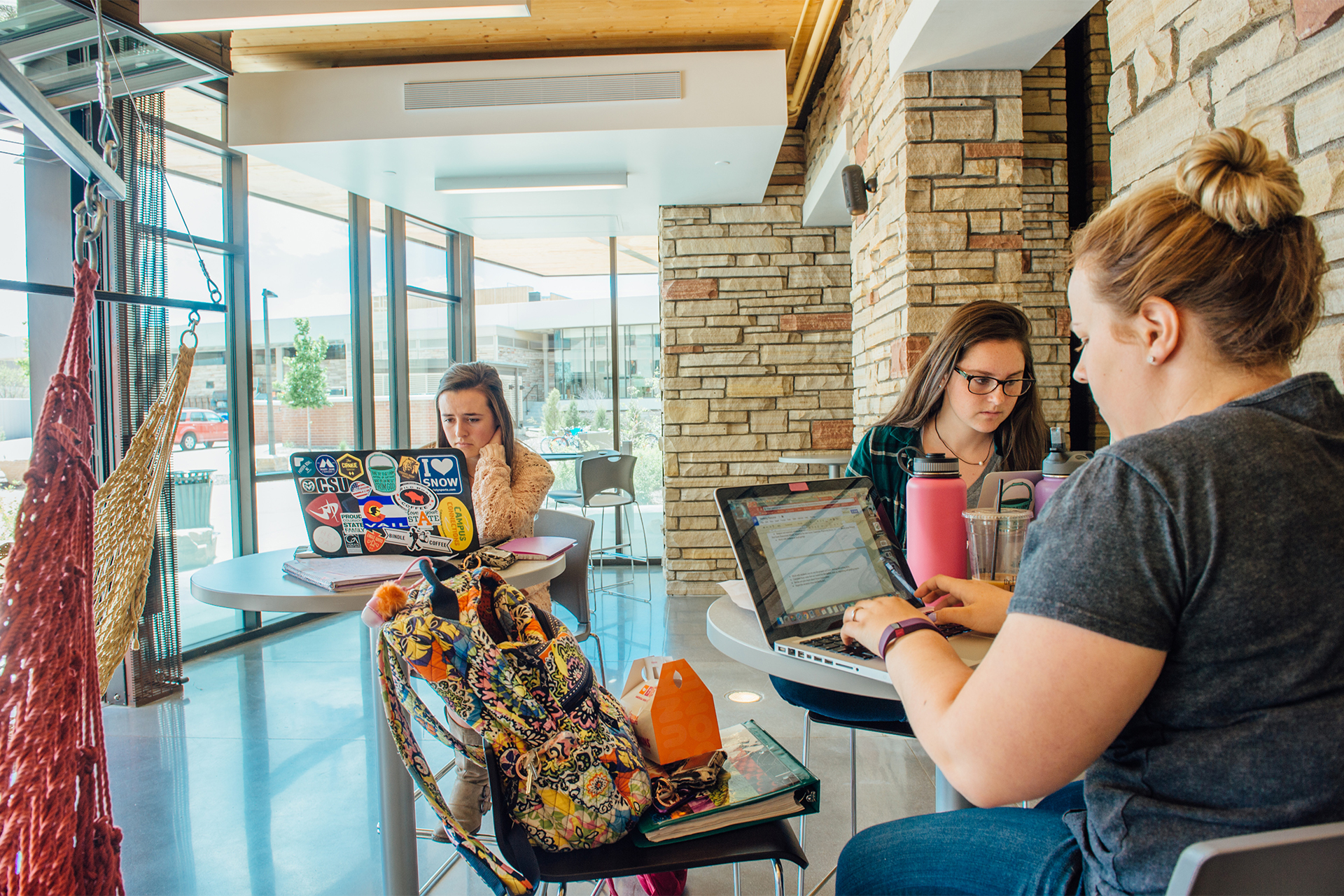
“Live and Learn,” now in its third year at CSU, provides residence hall staff with training on how to create positive learning experiences for students.
Don’t tell anyone, but Colorado State University is teaching students while they’re in the residence halls — without them really knowing.
It’s all part of “Live and Learn,” an approach that involves training hall staff about how to foster a positive learning experience on every floor.
“Historically, traditional programming in the residence halls has consisted of things like pizza parties and movie nights, which is fine, but this is about instilling lifelong learning,” said Helena Gardner, director of University Housing. “Learning happens both in the classroom and in the residence halls, and throughout your whole life.”
The “Live and Learn” approach, which is in its third year at CSU, is being adopted by a growing number of colleges and universities. Each fall, Gardner works with student affairs professionals across the country to implement it on their own campuses, as part of an annual institute hosted by the American College Personnel Association.
Yearlong messaging
In “Live and Learn,” residence hall staff train resident advisors and inclusive community assistants to incorporate key learning objectives into their everyday communications with their students, whether it’s in the form of a bulletin board posting, a floor meeting or a one-on-one interaction. And it’s not just about academics; it’s about topics like safety, identity and community living.
At the beginning of the school year, RAs in a hall of first-year students might post something on the bulletin board about their personal experience as a new college student, and how they found community or got connected to others on campus. New students are encouraged to attend early-semester campus-wide events like Convocation and Ramapalooza.
“We can be hopeful that each student finds a connection with their roommate, but if that isn’t the case, the bigger CSU community is here, and finding a connection is most important,” Gardner said, adding that the University’s Principles of Community are established early as well. For example, new students are encouraged to live out the principles by treating the staff who clean the bathrooms, halls and dining centers as critical members of the community.
“We can be hopeful that each student finds a connection with their roommate, but if that isn’t the case, the bigger CSU community is here, and finding a connection is most important.”
— Helena Gardner, director of University Housing
Later in the fall semester, key messages for RAs to instill — in their own conversational way, not as a stilted speech — include study skills and resiliency, incorporating effective methods already established by TILT (The Institute for Learning and Teaching) or YOU@CSU, for instance. When the end of the semester approaches, hall staff prepare their students for winter break.
“It’s more than just, ‘Clean your fridge,’” Gardner said. “It’s about questions like, ‘How will it be to have a curfew again at home?’”
Toward the end of the academic year, themes might include tips on choosing roommates and living on or off campus.
Strategies for success
Running throughout “Live and Learn,” albeit in the background, are some of CSU’s key strategies in the Student Success Initiative: the First Four Weeks, Momentum Year and Start Strong. Those efforts encourage students to be proactive in establishing relationships with their faculty early on and taking at least 30 credit hours in their first year (including math and English composition).
“It’s not about literally listing the recommendations, like ‘Develop an academic mindset,’” said Ryan Barone, assistant vice president for student success. “But maybe it’s about what it’s like to get an F. Or telling the student that faculty office hours shouldn’t be scary.”
He said it all begins with “Taking Stock,” an online assessment tool that provides students with an initial survey to complete, based on their status: first-year, transfer, returning or international. Then RAs initiate a follow-up session, one of multiple “intentional conversations,” in which the RA uses generated scripts as prompts to talk to students in their own words about where they stand and where they want to go.
The tool uses keywords and other methods to provide resources that may help address any issues the student might have. It characterizes aspects like the student’s growth mindset, grit and resiliency. Research has shown that the tool helps reduce common student-conduct problems and improves retention. It also can be used to proactively alert staff to give extra support for particular students.
Once the academic year starts, RAs employ another strategy beyond bulletin boards, hall meetings and intentional conversations: links. Links involve connecting students to campus events, guest speakers from off campus, or experiences in the community. At CSU, “Live and Learn” encompasses four themes: thriving, learning, awareness and connections.
An Experience CSU app for smartphones has been expanded to help students explore their first year or transfer experience. And it provides some access to parents, guardians and other family members, who can see and recommend campus events and activities that might be of interest to students who are bored or struggling making connections or finding friends.
Learning goals for ‘Live and Learn’
Thriving: Utilize a growth mindset to foster a lifelong commitment to individual and collective wellness
Connections: Achieve reflection to create healthy relationships
Learning: Approach learning through an integrated cycle of curiosity, critical thinking, and application
Awareness: Critical examination and meaning-making of how identities, experiences, and actions impact self and others
Learn more: housing.colostate.edu/halls/live-and-learn